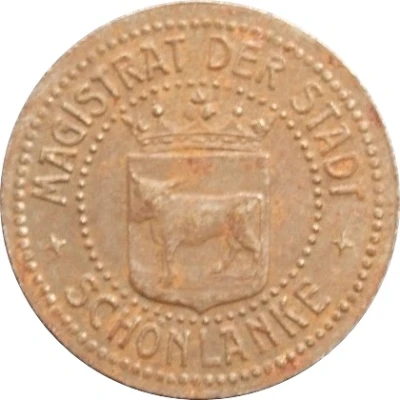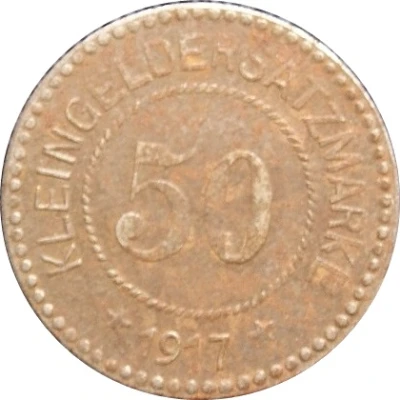


© bbybugs (CC BY-NC-SA)
50 Pfennigs - Schönlanke
1917 year| Iron | - | 24 mm |
| Issuer | City of Schönlanke (Posen) (Prussian province of Posen) |
|---|---|
| Emperor | William II (Wilhelm II) (1888-1918) |
| Type | Standard circulation coin |
| Year | 1917 |
| Value | 50 Pfennigs (50 Pfennige) (0.50) |
| Currency | Mark (1914-1924) |
| Composition | Iron |
| Diameter | 24 mm |
| Shape | Round |
| Technique | Milled |
| Orientation | Medal alignment ↑↑ |
| Demonetized | Yes |
| Updated | 2024-10-04 |
| Numista | N#64488 |
|---|---|
| Rarity index | 94% |
Reverse
Script: Latin
Lettering:
KLEINGELDERSATZMARKE
50
1917
Edge
Plain
Comment
Issuing authority: [Stadt, Posen]Interesting fact
One interesting fact about the 50 Pfennigs - Schönlanke 1917 coin is that it was issued during a time of economic turmoil in Germany. The country was facing severe inflation, and the value of the German mark had dropped significantly. In response, the government introduced a new currency, the "Notgeld," which included coins like the 50 Pfennigs - Schönlanke 1917. These coins were made of iron, which was a more affordable material than traditional metals like silver or gold, and they were designed to be used as a temporary solution to the economic crisis. Despite their humble origins, these coins have become sought-after collectibles among numismatists today.